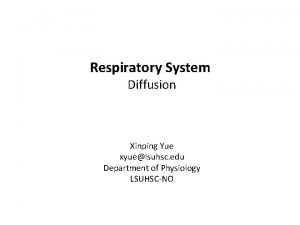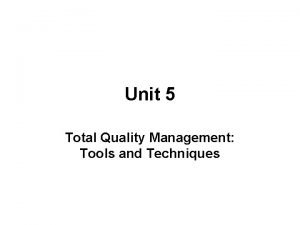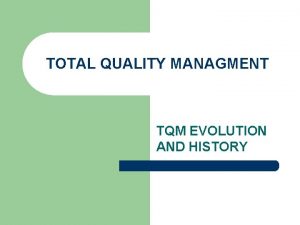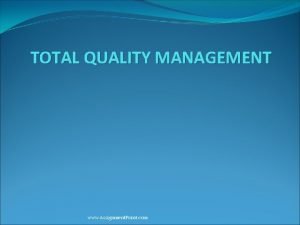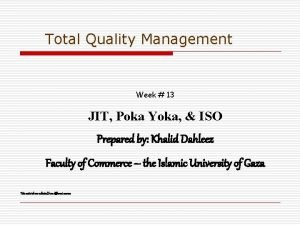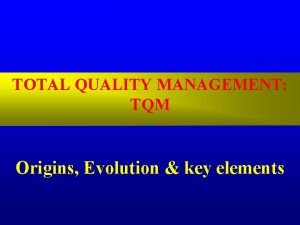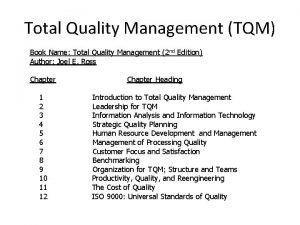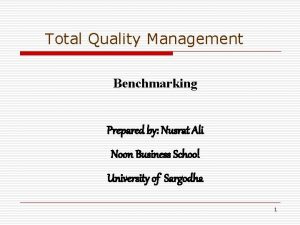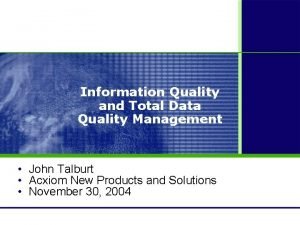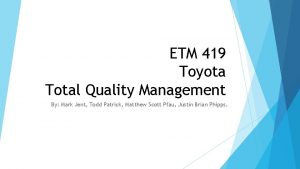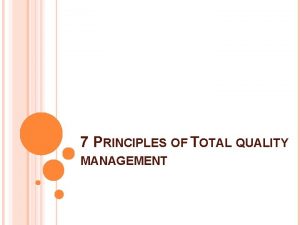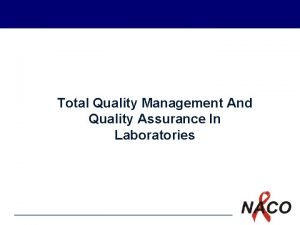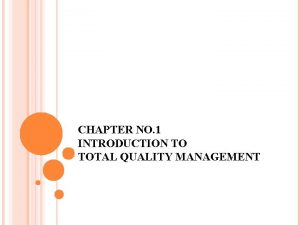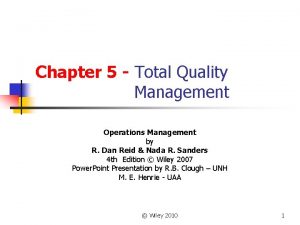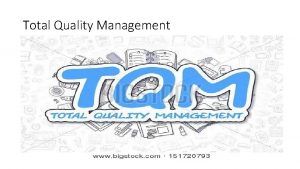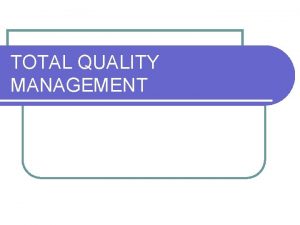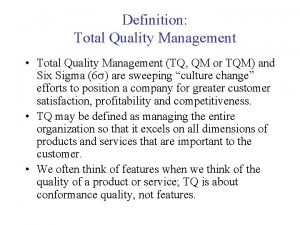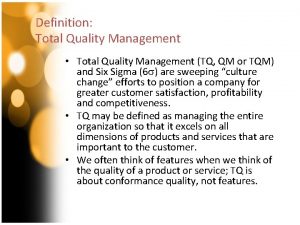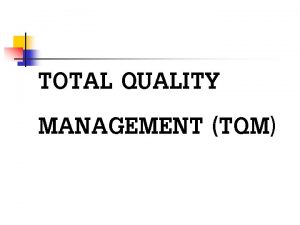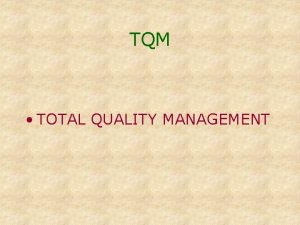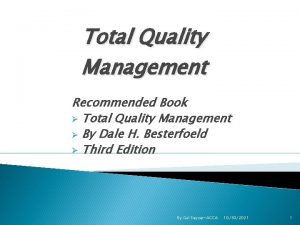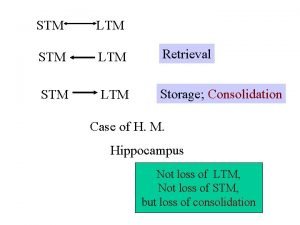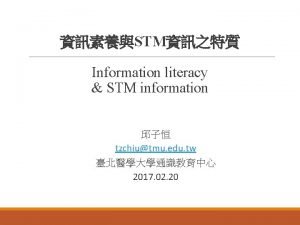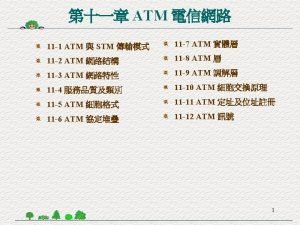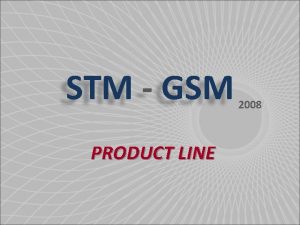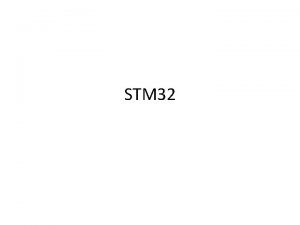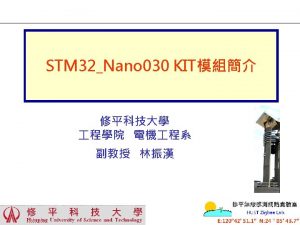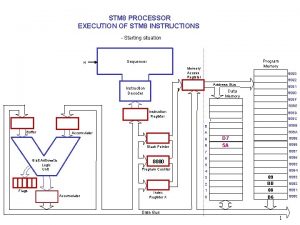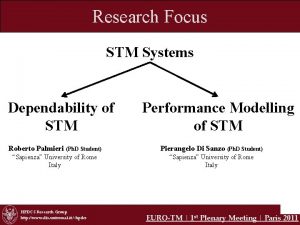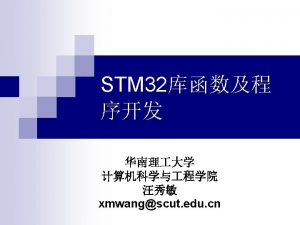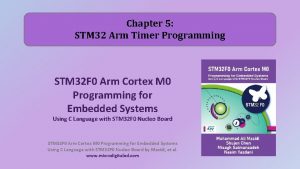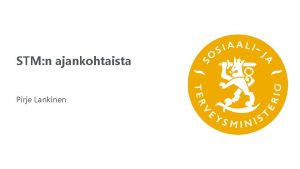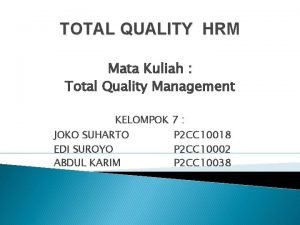STM Quality Limited PokaYoke TOTAL QUALITY MANAGEMENT PokaYoke

























- Slides: 25

STM Quality Limited Poka-Yoke TOTAL QUALITY MANAGEMENT Poka-Yoke ©©ABSL Power Solutions STM Quality Limited 2007

What is Poka-Yoke? STM Quality Limited l This is known as ‘MISTAKE-PROOFING’ l From Japanese: l Yokeru (avoid) l Poka (inadvertent errors) © STM Quality Limited

What Does Poka-Yoke Do? STM Quality Limited l Eliminates the cause of an error at the source; l Detects an error as it is being made; l Detects an error soon after it has been made but before it reaches the next operation. © STM Quality Limited

Are Errors Unavoidable? STM Quality Limited l There are two approaches to dealing with errors: l 1. ERRORS ARE INEVITABLE! l 2. ERRORS CAN BE ELIMINATED! © STM Quality Limited

1. Errors Are Inevitable STM Quality Limited l People always make mistakes. l While we accept the mistakes as natural, we blame the people who make them. l With this attitude, we are likely to overlook defects as they occur in production. l They may be detected at final inspection, or worse still, by the customer. © STM Quality Limited

2. Errors Can Be Eliminated STM Quality Limited l Any kind of mistake people make can be reduced or even eliminated. l People make fewer mistakes if they are supported by proper training and by a production system based on the principle that errors can be avoided. © STM Quality Limited

Inspection STM Quality Limited l One method of detecting errors is inspection. l There are two major types of inspection. l 1. SAMPLING INSPECTION. l 2. 100% INSPECTION. © STM Quality Limited

Sampling Inspection STM Quality Limited l In some factories, the attitude is: l “It may take all day to inspect all product”. l “There may be a few defects, but sampling is the most practical way to check”. © STM Quality Limited

Sampling Inspection - Reflection STM Quality Limited l Think about sampling. l With sampling, there is a chance that an error may go undetected. l Even if 1 part in 1000 is defective, the customer who buys that part has a 100% defective product! © STM Quality Limited

Sampling Inspection - Reflection STM Quality Limited SAMPLING INSPECTION MAKES SENSE ONLY FROM THE MANUFACTURER’S VIEW, NOT FROM THE CUSTOMER’S! © STM Quality Limited

2. 100% Inspection STM Quality Limited l In the best factories, the attitude is: l “We won’t tolerate a single defect!” l “We will organize production so that 100% of the product can be easily inspected”. l “That makes the most sense”. © STM Quality Limited

100% Inspection - Reflection STM Quality Limited l Think about 100% inspection. l Even one defective product is enough to destroy a customer’s confidence in a company. l To stay competitive a company must supply good product in thousands. l The best way to achieve this is to organize production to inspect 100% of the products. © STM Quality Limited

The User Is The Best Inspector STM Quality Limited l No one intends to make mistakes. l While we are working, errors can show up without us noticing. l How can we catch these errors before they turn into defective products? © STM Quality Limited

Finding Defects in the Subsequent Process STM Quality Limited l We don’t expect to find defects, but if a product we use doesn’t do what it is supposed to do, then we know it is defective. l Users are the best at discovering defects! © STM Quality Limited

Finding Defects in the Subsequent Process STM Quality Limited l Since subsequent processes are also ‘users’ of the product being manufactured, they are also expert at finding defects. l If products are produced in a flow, each product is sent to the next process as soon as it is finished and defects are therefore found immediately. © STM Quality Limited

Two Strategies for Zero Defects STM Quality Limited l 1. DON’T MAKE IT! © STM Quality Limited

1. Don’t Make It! STM Quality Limited l Don’t make product you don’t need. l The more you make, the greater the opportunity for defects. l Follow ‘just-in-time’ principles by only making what is needed, when it is needed in the amount needed. © STM Quality Limited

Two Strategies for Zero Defects STM Quality Limited l 2. Build Safeguards © STM Quality Limited

2. Build Safeguards STM Quality Limited l The user is an expert in finding defects. l Therefore build safeguards into the production process. l Quality can be built into products by implementation of Poka-Yoke. © STM Quality Limited

Poka-Yoke Devices STM Quality Limited l Human errors are usually inadvertent. l Poka-yoke devices help us avoid defects, even when inadvertent errors are made. l Poka-yoke helps build quality into processes. © STM Quality Limited

Poka-Yoke Devices – Error Detection and Alarms STM Quality Limited © STM Quality Limited

Poka-Yoke Devices – Checklists STM Quality Limited © STM Quality Limited

Poka-Yoke Example STM Quality Limited l It is possible to mount the blank the wrong way onto the pierce tool. BLANK PIERCED BLANK INCORRECT l As the blank can fit the pierce tool in many ways, how can this be prevented? © STM Quality Limited

Poka-Yoke Example STM Quality Limited l By fitting a block into the pierce tooling, the blank plate can only go on one way. BLOCK © STM Quality Limited

Poka-Yoke STM Quality Limited POKA-YOKE MEANS ZERO DEFECTS © STM Quality Limited
 Ppt index
Ppt index Operations management with total quality management book
Operations management with total quality management book Ficks law
Ficks law Tools and techniques of quality management
Tools and techniques of quality management What is total quality managment
What is total quality managment Tqm definition
Tqm definition Definition of just in time
Definition of just in time Total quality management system
Total quality management system Evolution of tqm
Evolution of tqm Ali akao dan mutu
Ali akao dan mutu Cause and effect diagram
Cause and effect diagram What is total quality management in hospitality industry
What is total quality management in hospitality industry Benchmarking in total quality management
Benchmarking in total quality management Quality gurus of tqm
Quality gurus of tqm Quality improvement vs quality assurance
Quality improvement vs quality assurance Kfc tqm
Kfc tqm Kaizen total quality management
Kaizen total quality management John talburt
John talburt Toyota fmea
Toyota fmea What are the 7 principles of quality management?
What are the 7 principles of quality management? Iqc and eqc
Iqc and eqc Introduction of total quality management
Introduction of total quality management Qfd in operations management
Qfd in operations management Total quality management wikipedia
Total quality management wikipedia Erp demystified
Erp demystified Quality management for agriculture
Quality management for agriculture


